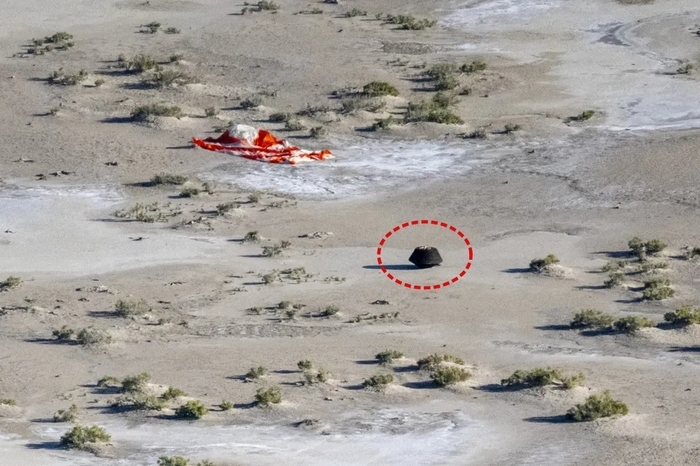<지난해 9월 미국 유타주 사막에 떨어진 소행성 '베누' 샘플 캡슐. 사진=미 항공우주국(NASA)/Keegan Barber>
A rock sample from the asteroid ‘Bennu’, which is believed to have formed in the early solar system, was fully opened last month.
Ahead of the release of analysis results at a conference next month, the National Aeronautics and Space Administration (NASA) research team announced that phosphate, a key component of life, was identified in Bennu’s samples and that Bennu is likely to be ‘a piece of an ancient marine world.’
<뚜껑이 제거된 오시리스-렉스 '베누' 암석 샘플 캡슐 헤드. 사진=미 항공우주국(NASA)/Erika Blumenfeld/Joseph Aebersold)>
According to the American aerospace media Space.com on the 6th (local time), a research team at the University of Arizona estimates that Bennu is a fragment of a water-rich planet that existed billions of years ago.
The research team reportedly confirmed a phosphoric acid crust that had never been observed before in asteroid samples. Some of the dark rocks were covered with a lighter-colored thin crust, and phosphorus in the form of phosphate was discovered in that area.
Phosphorus is an essential component of life and has also been confirmed on Enceladus, Saturn’s sixth satellite (moon). Enceladus has a surface covered with ice and is known to have a huge ocean underneath. The ocean of Enceladus is estimated to have a concentration of dissolved phosphate at least 100 times higher than that of Earth’s ocean.
“Our hypothesis is that Bennu was an ancient ocean world,” Dante Lauretta, principal investigator for asteroid Bennu at the University of Arizona, told New Scientist. “There were phosphate minerals containing calcium and magnesium.”
Researchers believe that this research will not simply examine the possibility of the existence of ‘life’ on Bennu, but will be a study that will delve into the origin of life from a larger perspective and unlock the secrets of the early solar system 4.5 billion years ago.
<소행성 '베누' 크기 비교. 미국 엠파이어스테이트 빌딩과 프랑스 에펠탑보다 좀 더 크다. 사진=미 항공우주국(NASA)>
<소행성 '베누'에서 샘플을 채취하는 탐사선 '오시리스-렉스' 상상도. 사진=미 항공우주국(NASA)>
Meanwhile, NASA’s asteroid probe Osiris-Rex was launched from the Cape Canaveral Space Center in the United States in September 2016 and flew to the asteroid Bennu, about 320 million km away from Earth. About 250g of samples were collected from this place and dropped to Earth in September of last year, seven years later.
The probe Osiris-Rex’s Bennu sample repatriation mission to Earth was successfully completed. At the time, the probe launched samples to Earth and left to explore another planet, Aposis, without landing.
Electronic Newspaper Internet Reporter Seo Hee-won [email protected]


